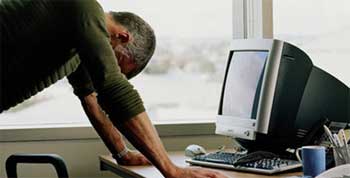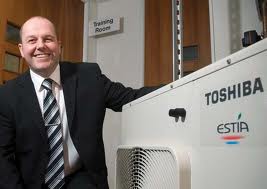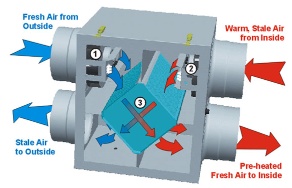
What is Sick Building Syndrome?
Sick Building Syndrome (SBS) is estimated to cost the British economy 24.6 million lost working days every year. A report by the World Health Organisation determined that as much as 30 per cent of new and remodelled buildings around the world could cause sick building syndrome symptoms, with women apparently more susceptible to the affects.
According to the NHS, Sick building syndrome is a a phenomenon where people in particular work environments have a range of non-specific, building-related symptoms. So…
What are the symptoms of Sick Building Syndrome?
Building occupants complain of symptoms such as:
[blueTable]| Headaches Dizzines Nausea (feeling sick) Aches and pains Fatigue (extreme tiredness) |
Loss of concentration Shortness of breath Sensitivity to odours Eye, nose and throat irritation Skin irritation (skin rashes, dry itchy skin) |
The symptoms of Sick Building Syndrome can appear on their own or in combination with each other. Several sick occupants may report individual symptoms which do not appear to be connected, but they usually improve or disappear altogether after leaving the building.
In some cases, particularly in sensitive individuals, there can be long-term health effects. Women appear to be more likely to develop the symptoms than men. However, this may be due to more women being employed in offices rather than a higher susceptibility.
What types of buildings get Sick Building Syndrome?
[image position=”right” alt=”Sick building syndrone air conditioning” left_padding=”0″ right_padding=”0″ url=”http://test.airintelligence.co.uk/wp-content/uploads/2012/05/sick-building-syndrome-2.png” width=”200″ height=”150″/]Sick Building Syndrome seems to be associated with certain types of buildings. Most cases occur in open-plan offices, although people sometimes develop the symptoms while in other buildings that are occupied by lots of people, such as schools, libraries and museums.What causes Sick Building Syndrome?
Sick Building Syndrome appears more likely to occur in buildings with old or poorly installed air-conditioning and ventilation systems that circulate air around the building. However, even modern buildings that are remodelled are also prone to this condition. Particularly where original air flows have be disturbed by erection of partitions and offices.
Since the 1970s, researchers have tried to identify what causes Sick Building Syndrome. As yet, no single cause has been identified. However, most experts believe that Sick Building Syndromemay be the result of a combination of different factors. Possible risk factors for Sick Building Syndrome may include:
[ul style=”7″] [li]poor ventilation with an insufficient volume of air change[/li] [li]low humidity [/li] [li]high temperatures or constant changes in temperature throughout the day [/li] [li]airborne pollutants, such as dust, carpet fibres or fungal spores. Bacteria, molds, pollen, and viruses are other types of biological contaminants[/li] [li]poor standards of cleanliness in the working environment [/li] [li]poor lighting that causes glare or flicker on visual display units (VDUs)[/li] [li]working with display screen equipment for prolonged periods of time[/li] [li]psychological factors, such as stress or poor staff morale[/li] [/ul]
Advice for building managers
NHS Direct and other health sources make the following recommendations to mitigate against Sick Building Syndrome:
[ul style=”3″]
[li]Carry out an employee survey to find out whether symptoms are occurring more often than expected. It may also help to identify any obvious causes that can easily be fixed, such as adjusting the office temperature.[/li]
[li]Check the general cleanliness of the building, including checking that the vacuum cleaners are working properly, that they are regularly emptied and their filters are clean. Use HEPA filter vacuum cleaners that provide greater filtration of smaller particals.[/li]
[li]Check the operation of the heating, ventilation and air-conditioning system. In particular, the system that supplies fresh air should be checked. Increase the number of air exchanges per hour. Office building should have 6-10 air changes per hour, but this increases for buildings or rooms that prepare or serve food or where larger numbers of people congregate. [/li]
[li]Check the condition and cleanliness of air filters, humidifiers, de-humidifiers and cooling towers.[/li]
[li]Check heating, ventilation and air-conditioning system maintenance schedules. Ensure that they are being followed properly and recorded in you air conditioning asset log.[/li]
[li]Roof shingle cleaning to remove algae and mold. Replacement of water-stained ceiling tiles and carpeting. [/li]
[li]Use paints, adhesives, solvents, and pesticides in well-ventilated areas, and use of these pollutant sources during periods of non-occupancy.[/li] [/ul]







